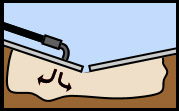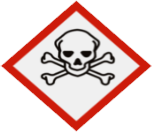There has been quite a bit of “buzz” about polyurethane form otherwise known as Poly lifting/jacking/leveling as a substitute for cementitious grout generally pumped with original traditional mudjacking. Before you jump on that bandwagon, we would like to share some vital information about polyurethane foam that should change your mind. Our sources for this information comes from: www.epa.gov www.osha.gov www.nist.gov
www.cdrecycling.org Polyurethane foam is a byproduct processed from crude oil. Main ingredients are polyois and diisocyanate, both of which are identified as carcinogens and listed as Toxic Substances by EPA. Other ingredients and exposure to its contaminants toluene diisocyanate, methylene chloride, hydrogen cyanide, Iscyanates are known neurotoxins or carcinogens causing cancer in animals. Polyurethane (even best foam) breaks down in 10-12 years under normal conditions.
Let’s look at the claims made about polyurethane and compare them to the facts about cementitious grout.
POLYURETHANE CLAIMED ADVANTAGES VS CERTIFIED NON
SHRINK MUDJACKING GROUT:
Poly: Doesn’t stress the concrete due to uneven coverage.
Mudjacking: Pressurized cement grout evenly spread reduces stress off the concrete.
Poly: 95% closed cell foam repels water.
Mudjacking: Cement grout is not a petroleum based material and repels water.
Poly: Will not shrink
Mudjacking: Will not shrink, in addition admixtures strengthens final grout placement.
Poly: Up to 250 psi compressive & tensile strength
Mudjacking: Cement grout offers compressive & tensile strengths of 600-5000 psi.
Poly: Excellent coverage within 1/32 of an inch
Mudjacking: Cement grout can meet or exceed coverage within 1/32 at higher psi.
Poly: Injection holes slightly smaller or 5/8” inch dia.
Mudjacking: Less quarter size holes drilled per panel, holding more integrity in the slabs.
Poly: Extreme lifting capabilities
Mudjacking: Meets or exceeds lifting capabilities of polyurethane.
Poly: Lightweight 125-250 # per yard will not overburden soil
Mudjacking: Research indicates slab deflection breaks down foam polyurethane.
Poly: New glorified way to raise concrete.
Mudjacking: Most preferred Mudjacking grout has been used for over 100 years.
Poly: Sub-seals floors.
Mudjacking: Cement grout sub-seals floors at higher compressive strengths
Poly: Waterproofs walls.
Mudjacking: Portland cement grout and bentonite waterproofs walls.
Poly: Cost effective.
Mudjacking: Mudjacking grout is a fraction the cost of polyurethane 50-80%
less.
Poly: Eco-friendly.
Mudjacking: Portland Cement grout can be added to the recycling process with no additional cost or threat to the environment
Polyurethane is a petroleum-based, toxic, sticky material that adheres to the concrete, rendering it unacceptable at the recycling centers. At some point, all concrete must be replaced. Concrete that has polyurethane attached to it will not be accepted at concrete recycling centers. It must be disposed of at a toxic waste facility. The Construction & Demolition Recycling Association states that “no concrete will be allowed for processing that contains hazardous materials or contaminates“. When concrete is removed, it will be the owners responsibility and cost to safely remove and dispose of the toxic polyurethane foam.
Mudjacking vs. Polyurethane

Proven Quickest, Efficient, and Most Effective Controlled Jacking Method of Repairing Sunken Concrete! Less hassle, Less down time. Immediate use, once it is restored and realigned by Traditional Mudjacking.

Waiting for chemical reaction to occur. If mixed incorrectly can be toxic. As seen, this newest poly system may not raise the uneven concrete enough and/or over lift the panels attempting to jack or level them.

Fully filling Voids before lifting gives proper reinforcement while raising. Modern mudjacking techniques exceed poly by completely, stabilizing beneath hollowed unsafe squares, giving even coverage below and restoring the slabs with continuous support.

Foam expansion sets fast. Mounds of polyurethane injection leave pockets / voids. If left open, soil can erode, leading to unstable concrete that is susceptible to extra stress on the slabs structure or foundation. Water, rodents, or insects also can inhabit the space.

Professional mudjacking is the most preferred long term solution. Less holes drilled per project. Specialized trade for water erosion issues, unsettled subsoil, sinkholes, & unlevel concrete. A fraction the cost vs. poly lifting. Our warranty is unmatched the industry!

More pennies spent and penny sized Injection drill holes needed, in hopes of pumping filler into hollow cavities below the empty, unsupported concrete sections, plus additional hidden poly pumping charges and future costs of removal for foam fill product can incur.

Our 100% natural crushed limestone rock mixed with cementitious grout offers strong, solid support. Builders use rock, dirt, or sand under concrete and around the foundations forfill. Absolutely no concrete company will pour new concrete on top of poly foam injection.

Ask the contractor if any of their polyurethane is hazardous in liquid form, before sprayed. Poly foam is not accepted with concrete recycling companies and must be properly disposed of. Know the facts and safety before deciding which method you’ll choose.

